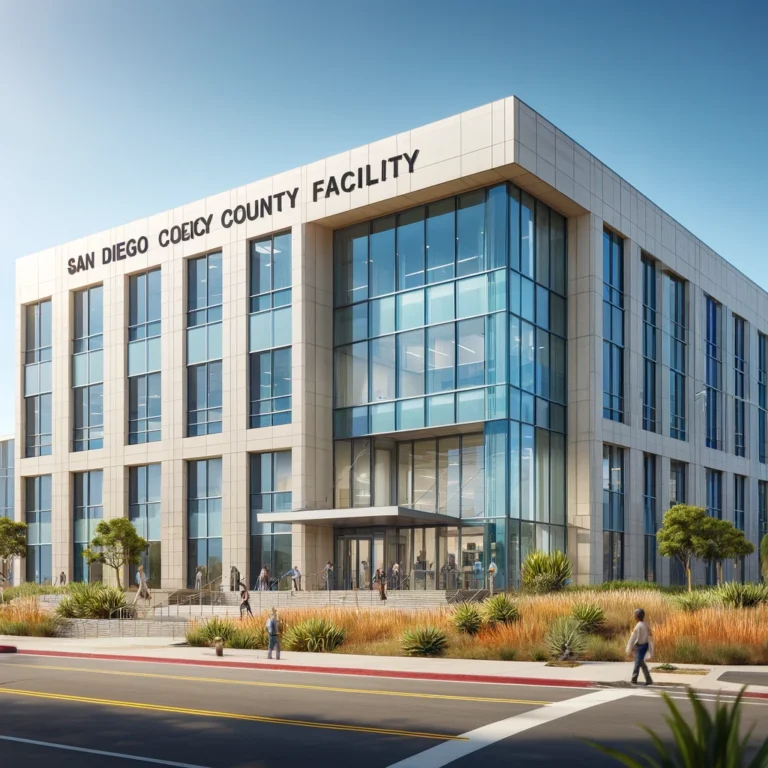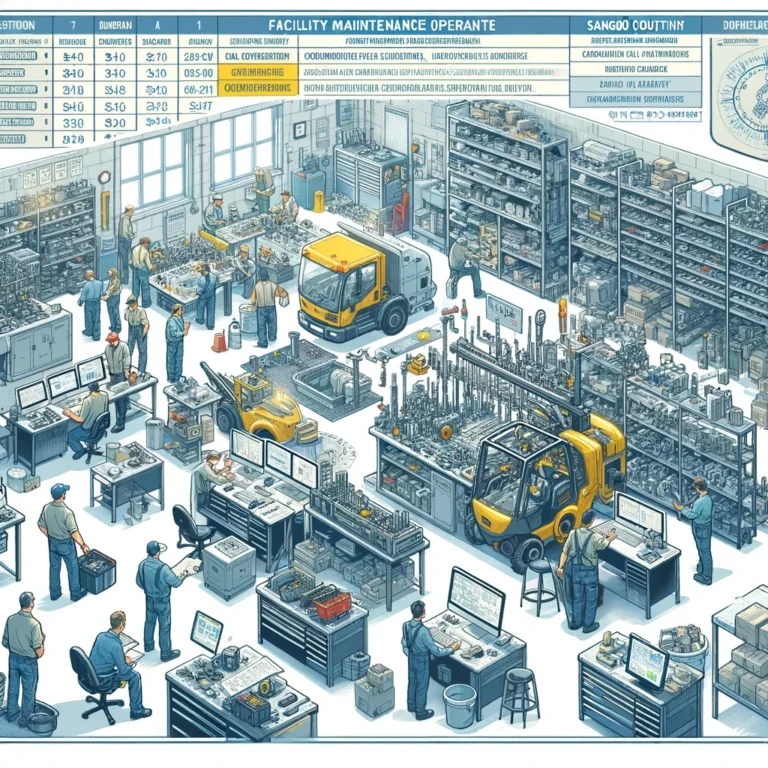San Diego County Facility: Sheriff & Corrections Overview
Table of Contents
- Overview of San Diego County Correctional Facilities
- Informative List
- Richard J. Donovan Correctional Facility (RJD)
- San Diego Central Jail and Other County Detention Facilities
- Facility Maintenance and Operations
- FAQs
- The Role of the Sheriff’s Office
- Challenges and Future Outlook
- Primary Takeaways

The world of correctional facilities is complex, with multiple layers of operations ensuring safety, security, and rehabilitation. In San Diego County, California, these elements are at the forefront of both the Sheriff’s Office and the Department of Corrections and Rehabilitation (CDCR). The following is an overview of the critical correctional facilities in San Diego County, shedding light on their operations, administration, and the challenges they face.
Overview of San Diego County Correctional Facilities
San Diego County encompasses a vast area, spanning 4,207 square miles, and includes a wide range of correctional facilities. From detention centers to state prisons, these facilities are distributed throughout the county, providing a critical infrastructure for managing the incarcerated population. Notably, San Diego County hosts three of the five major correctional facilities overseen by the CDCR in Southern California. This distribution ensures that law enforcement and correctional staff can operate efficiently while maintaining public safety.
Informative List
- City of San Diego: The central hub for San Diego County’s correctional system.
- Chula Vista: A key location with its own jail and associated services.
- Park: Facilities often have outdoor areas or recreation areas for inmates.
- Mission: The overarching goal of correctional facilities in San Diego County is safety and rehabilitation.
- Recovery: Programs aimed at supporting inmates’ recovery from addiction or other challenges.
- 619: The primary area code for San Diego County.
- Three of Its Five Facilities: San Diego County has three of the five major correctional facilities in Southern California.
- Throughout San Diego County: The distribution of facilities throughout the county.
- R.J.: Refers to Richard J. Donovan Correctional Facility (RJD).
- Orange County: Neighboring county with its correctional system.
- RJDCF: Abbreviation for Richard J. Donovan Correctional Facility.
- Warden: The individual responsible for overseeing the operations of a correctional facility.
- 2022: Notable year with significant events or changes within the correctional system.
- Recreation: Activities and spaces for inmate recreation.
- Reservation: This could refer to securing specific areas for inmate activities or other purposes.
- Guardian: Those responsible for inmate custody and security.
- Storm Recovery Information: Information on how facilities handle emergencies like storms.
- Building Systems: Infrastructure within correctional facilities, including HVAC and electrical.
- Comprise: The makeup or composition of various facilities.
- One of Two: Could refer to critical points of interest or divisions within a facility.
- Services Are Provided: The range of services correctional facilities offer to inmates.
- 2021: Another notable year with specific developments.
- Completed the Conversion of Three: A significant achievement in facility operations.
- Housing and Providing Treatment: Essential functions of correctional facilities.
- Providing Treatment to Inmates: Rehabilitation and Medical Care.
- Treatment to Inmates with Severe: Support for inmates with severe conditions.
- Identified as Having Medium: Specific classification for inmates.
- Medium to High-Risk Medical: Additional classification based on medical risk.
- High-Risk Medical Concerns: Challenges in managing high-risk inmates.
- Custodial: Relates to the custodial duties of correctional staff.
- Voluntary: Programs or activities in which inmates participate voluntarily.
- Heating: Key building system.
- Air Conditioning: Essential for comfort and safety.
- Unincorporated: Regions in the county are not part of a city.
- Mira Mesa: Another area within San Diego County.
- District Attorney: The official responsible for prosecuting cases within the county.
- Administrative: Refers to the administrative aspects of facility operations.
- Day-to-Day: Daily operations and routines within correctional facilities.
- Firearm: Essential for security and enforcement.
- Ventilation: Critical building system for safety and comfort.
Richard J. Donovan Correctional Facility (RJD)
Richard J. Donovan Correctional Facility (RJD), located in Otay Mesa, is a prominent state prison in the San Diego area. It houses inmates with a variety of classifications, including those with sensitive needs, medium to high-risk medical concerns, and severe mental illnesses. RJD operates multiple programs for inmate rehabilitation and reentry into society, with a focus on providing treatment for those with severe mental health issues.
RJD’s facilities encompass various operations, from the shoe factory and bakery to the HVAC and building maintenance systems. Preventive maintenance and emergency repairs are carried out by a team of skilled technicians, including carpenters, electricians, painters, and plumbers. This high degree of coordination ensures the facility runs smoothly and effectively.
San Diego Central Jail and Other County Detention Facilities
The San Diego Central Jail, located in downtown San Diego, serves as the primary intake facility for inmates throughout the county. It operates under the jurisdiction of the San Diego County Sheriff and handles a wide range of inmates, from those awaiting trial to those serving short sentences. The facility prioritizes custody and classification, ensuring that inmates are housed in a manner consistent with their risk level and security requirements.
Additionally, the county oversees other detention facilities, including the Las Colinas Detention and Reentry Facility in Santee and the Vista Detention Facility in Vista. These facilities focus on reentry programs and rehabilitation, providing inmates with resources to reintegrate into society upon release. Programs include job training, education, and substance abuse counseling, all aimed at reducing recidivism and promoting successful reentry into the community.
Facility Maintenance and Operations
Maintenance plays a crucial role in the smooth operation of correctional facilities. From HVAC systems to building infrastructure, facility maintenance teams are responsible for ensuring that all systems function properly. This includes preventive maintenance, emergency repairs, and ongoing oversight to address any issues that may arise.
Facility maintenance in San Diego County correctional facilities is a collaborative effort involving a range of skilled technicians. The teams include carpenters, electricians, painters, plumbers, and HVAC technicians, all of whom work together to keep the facilities running efficiently. These maintenance teams are crucial for maintaining safety and security within the correctional environment.

San Diego County Facility FAQs
- What does “three of its five facilities” mean? This refers to San Diego County hosting three of the five major correctional facilities overseen by the California Department of Corrections and Rehabilitation in Southern California.
- What is the significance of Richard J. Donovan Correctional Facility (RJDCF)? RJDCF, located in Otay Mesa, is a significant state prison that houses inmates with sensitive needs and provides treatment to those with severe mental illnesses.
- What types of services are provided within San Diego County correctional facilities? Services include rehabilitation programs, medical care, recreation, building maintenance, HVAC, and custodial activities.
- What year marked significant changes within the correctional system? The year 2022 saw notable events and changes in the penitentiary system.
- What does “completed the conversion of three” refer to? It refers to the successful conversion of three facilities for specific purposes, such as inmate treatment or reentry programs.
- How does San Diego County handle emergencies like storms? Facilities have storm recovery information and emergency plans to ensure safety and continuity of operations.
- What does “voluntary” refer to within correctional facilities? It indicates that specific programs or activities are optional for inmates, encouraging participation without compulsion.
The Role of the Sheriff’s Office
The San Diego County Sheriff’s Office plays a pivotal role in overseeing the county’s detention facilities. Deputies are responsible for maintaining custody, security, and operational control over inmates. They work in collaboration with correctional officers and other staff to ensure that inmates are classified and housed appropriately.
The Sheriff’s Office also oversees parole and other post-release programs, working closely with the California Department of Corrections and Rehabilitation to ensure a smooth transition for inmates returning to society. This collaboration between the Sheriff’s Office and the CDCR is essential for maintaining public safety and promoting successful reentry.
Challenges and Future Outlook
The correctional system in San Diego County faces several challenges, including managing an incarcerated population with diverse needs and addressing ongoing maintenance and operational issues. However, the county’s commitment to rehabilitation and reentry programs provides a positive outlook for the future.
Inmates with severe mental illnesses and high-risk medical concerns require specialized care, and the county’s correctional facilities are equipped to provide treatment and support for these individuals. Through ongoing collaboration between the Sheriff’s Office, the CDCR, and other stakeholders, San Diego County is poised to continue its efforts in promoting safety, security, and successful reentry for inmates.
As the county’s correctional facilities evolve, the focus remains on maintaining safety while providing inmates with the resources and programs they need for successful reintegration into society. This comprehensive approach ensures that San Diego County’s correctional facilities continue to operate at the highest level of efficiency and effectiveness.
Primary takeaways
- San Diego County has three of the five major correctional facilities in Southern California, demonstrating the county’s significant role in the state’s correctional system.
- The Richard J. Donovan Correctional Facility (RJDCF) is a critical institution that provides treatment for inmates with severe mental illnesses and other sensitive needs.
- Building maintenance and facility operations are critical for the smooth running of correctional facilities, with a focus on HVAC, custodial services, and emergency preparedness.
- The San Diego County Sheriff’s Office oversees the day-to-day operations of correctional facilities and collaborates with the California Department of Corrections and Rehabilitation (CDCR) to ensure inmate safety and successful reentry into society.
- Ongoing rehabilitation and reentry programs are designed to support inmates’ transition back into society, reducing recidivism and promoting a safer community.
